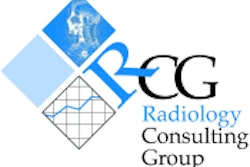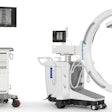
AuntMinnie.com is pleased to present the eleventh in an ongoing series of practice management articles contributed by the Radiology Consulting Group in Boston. This monthly series addresses topics and issues of concern to radiology administrators and business managers.
By Nicole Pliner, managing directorRadiology Consulting Group

How do you determine whom to solicit? How do you narrow the list? How do you ultimately find the right product fit for your organization? The following steps will help guide you through the selection process.
Goals and objectives
The most important step in PACS selection should occur before any vendors are contacted. Before considering product options, an organization must clearly define its PACS goals and objectives. Answers to questions such as the following are essential:
- What led to the decision to purchase a PACS?
- What impact do you expect the technology to have on radiologist workflow?
- What operational processes do you expect PACS to improve?
- How will you leverage the technology outside your organization’s walls?
- What is your budget for PACS?
- What is your timeline for implementation?
If an organization is unable to articulate its goals and objectives, it will travel aimlessly through the PACS market. And it will become vulnerable to a lengthy product selection process that may not result in the correct system for its needs.
List of vendors
Walking through the massive halls at McCormick Place in Chicago during the annual meeting of the Radiological Society of North America, it's easy to become overwhelmed by the number of PACS options. At the initial stage of developing a list of vendors, all of the following can help.
- Consult your colleagues at other organizations. Firsthand information from those you respect can be invaluable.
- Conduct market analysis. There are multiple Web sites, journals, and surveys available.
- Educate yourself by reading and attending events and courses, such as the Society for Computer Applications in Radiology's annual conference, and PACS into the 21st Century.
- Evaluate your organization's existing relationships with vendors.
- Seek the advice of consultants.
These sources will yield a solid list of vendors. To narrow it down to a manageable size, invite the vendors to provide a preliminary presentation. To make these presentations efficient and useful, it is recommended that only a short time be given to the vendor to present and the majority of the time be allocated toward questions. The best questions are situational, in which you ask the vendor how their technology will address specific issues and concerns at your site.
Request for proposal
The strategy for developing a request for proposal (RFP) is worthy of its own separate article. In brief, the RFP must clearly articulate the needs and expectations of your organization. The RFP is your chance to dictate to the vendors the level of performance you require.
It is important to develop a format for response that facilitates analysis and allows you to conduct an apples-to-apples comparison. Allow vendors an ample amount of time to respond, and limit the number of hard-copy responses. It will be much easier for your team to work with electronic responses, and will also spare you of a lot of clutter.
RFP evaluation
An organization should not develop an RFP or begin to evaluate responses without first defining evaluation criteria. Evaluation grids should be created that reflect these criteria and should be completed by all evaluators for each vendor response.
To some organizations, a vendor’s installed base and experience is most important, while some place a significant value on particular performance criteria, some others are looking most for a vendor that wants to partner and develop the organization into a show site, and still others closely weigh price. Whatever the criteria, it must be clearly understood and adhered to during the evaluation of the RFPs.
Site visits
Although RFPs are a key step in the vendor selection process, site visits, if structured correctly, really can provide the best way to evaluate and compare vendors. Recommendations for a fruitful site visit include:
- Select sites of similar size, types of modalities, and exam volumes to your own.
- Develop a pre-visit list of requirements that specifies exactly what you want to see and whom you want to speak with while on-site. (If a particular person can't meet with you on the day of your visit, get a telephone number and place a follow-up call.)
- Establish a site-visit team that includes representation from radiologists and other key constituents and make sure that the same team visits each site.
- Prepare a list of questions to ask at each site, and provide each of the site-visit team members with an evaluation form to document their commentary. For a true apples-to-apples comparison, be sure to ask the same list of questions at each site.
References
Along with visiting the sites, checking references is invaluable. For best results, don't make the mistake of limiting reference checks to the names provided by the vendors. Call other sites in their installed base. Members of the PACS team should talk to their counterparts at these locations.
As with any major equipment purchase, due diligence in the PACS vendor selection process is vital. Following these guidelines should put your organization in a position to navigate the market and identify the product that best meets your goals and objectives.
By Nicole PlinerAuntMinnie.com contributing writer
September 27, 2001
Related Reading
Strategic plan allows smooth transition from film library to image service center, August 29, 2001
Site development is key to marketing radiology on the Web, August 9, 2001
e-Radiology enhances marketing opportunities, July 24, 2001
Proper training can reduce errors in PACS implementation, July 4, 2001
Strategic marketing brings in referring physicians, June 27, 2001
Copyright © 2001 AuntMinnie.com


















